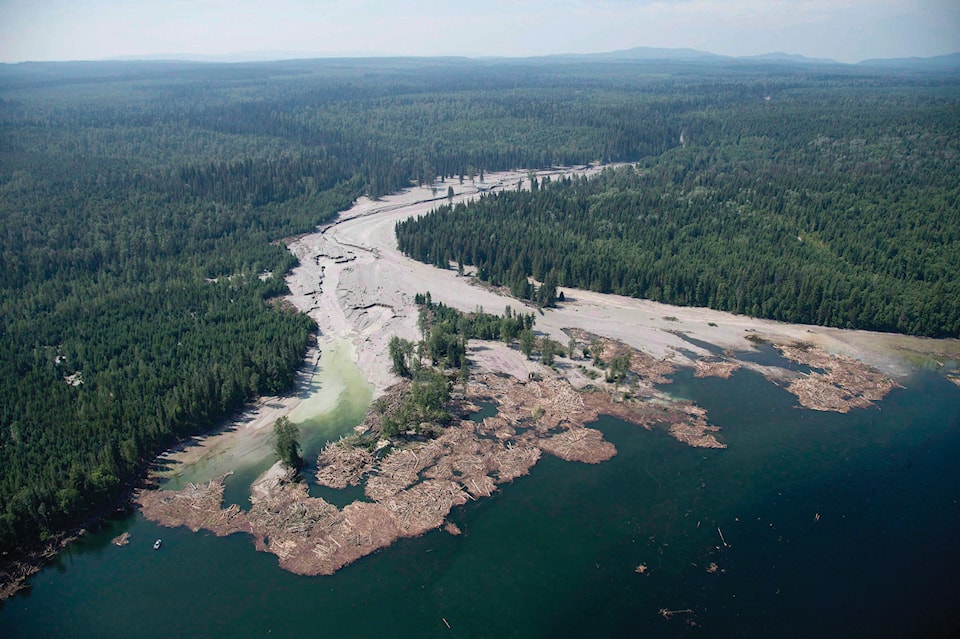A new map detailing B.C. mine sites and the potential risks they pose to the environment is now available to communities concerned about industrial pollution leaking into drinking water and fish habitat.
SkeenaWild Conservation Network and the BC Mining Law Reform Network released the map of 173 metal and coal sites in response to what they call growing concerns over antiquated B.C. mining regulations.
SkeenaWild executive director Greg Knox said he and his team spent four months compiling the data from limited ministry documents, mining company websites and interviews, and environmental assessment reports.
“The information on the map was challenging to uncover,” Knox said. “How can we begin to investigate these potentially mine-damaged waters and monitor the extent of the pollution, when the information is not even available to the public?”
The map features 173 large coal or metal mines either closed, abandoned, or active, but excludes 130 sites currently in the exploration stage.
READ MORE: B.C. outdoor group calls for removal of U.S. dam
Of those studied, only two sites pose no water contamination threat, according to the research, while 116 have already contaminated the surrounding environment or have the potential to do so. Knox said 55 of the sites had no publicly-available information about contamination risk.
Leaks from tailings ponds would pose serious threats to salmon habitat throughout the province. Knox singled out the Northwest’s Babine Lake, the largest sockeye salmon producing system in Canada that contributes about 90 per cent of sockeye returns to the Skeena River. SkeenaWild research has found high levels of metal contaminates around two decommissioned mine sites, within the lake and in fish tissue.
The 2014 breach of the Mount Polley mine’s tailings pond underscores the need for more transparency in the mining sector, say the map’s editors. A provincial investigation found poor regulations contributed to the disaster that released 24-million cubic metres of waste water into Quesnel Lake near the town of Likely.
In a statement to Black Press Media the B.C. government said it has taken substantial action to improve mining oversight since the Mount Polley investigation recommendations, including the formation of a mining division on health, safety and enforcement in 2019, backed by $20-million.
An amended Mines Act in 2020 also created a chief permitting officer position distinct from the chief inspector of mines, and a chief auditor to evaluate the effectiveness of regulatory framework. A committee was then established to ensure regulations remain current and responsive to industry changes.
A ministry spokesperson said these amendments recently led to the first successful prosecutions in two decades for non-compliance.
The government’s BC Mine Information Website, a site related to prosecutions and penalties, and the MINFILE database offer public access to mining activities, but Knox cautioned these resources are starved of adequate information.
“It cost us over $20,000 to pull this information together and produce the map, I think this reflects the lack of ease and availability of information that should be easily accessible to the public.”
He added many permits allow companies to exceed pollution levels and to discharge water from contaminated sites, so even if a mine is in compliance it is still possible to cause harm.
Nikki Skuce, co-chair of the BC Mining Law Reform Network believes the government is making genuine strides to improve mining regulation, but notes the laws developed in the 1850s were intentionally lax to encourage exploration and settlement during the gold rush era. Despite government assurances today, environmental organizations are still pushing hard to see regulations overhauled to reflect current standards of social responsibility and scientific knowledge.
“B.C. is trying to position itself as a leader for mining materials that go toward the low-carbon energy future … but it needs to do more in order to truly be considered a responsible mining jurisdiction,” she said. “The government has committed to put in some kind of polluter-pays policy into their mandate, but it’s been four years of public engagement. They also committed to implementing the recommendations of the Mount Polley disaster but they have yet to fully do that.”
The closed Tulsequah Chief mine near the B.C.-Alaska border has been leaking high levels of acid drainage into the Taku watershed for more than 60 years. Despite ongoing talks between the province and their American counterparts, the mine was a key feature in a successful campaign by U.S. senators, led by Alaskan Republican senator Lisa Murkowski, to receive $3.6 million from the American government to pressure the B.C. and Canadian governments into reforming mining regulations they say have placed transboundary watersheds at risk.
READ MORE: Alaska demands action on B.C.’s ‘lax’ mining oversight
The province took the mine into receivership in 2016 and has secured all known chemicals on site. This summer road repairs and other infrastructure upgrades will begin ahead of remediation work developed with the Taku River Tlingit First Nation. Each of three remediation options will cost the province in the high tens-of-millions of dollars.
But the mine’s owners had provided just $1 million for its reclamation bond, according to Skuce, who points to Tulsequah as an example for higher bond requirements.
“If a company has to pay upfront for how they’re going to eventually close the mine, then they’re going to choose tailings that are less risky for communities and watersheds,” Skuce said.
On this, the province agreed, saying it “strongly believes” large industrial projects should be bonded to pay the full costs of environmental cleanup, and is currently engaging with First Nations, environmental organizations and industry to put something in place.
“While mining companies are responsible for reclamation liabilities on their mine sites whether a bond is held by government or not, we know there is more we can do.”
To view the map visit reformingbcmining.com.
